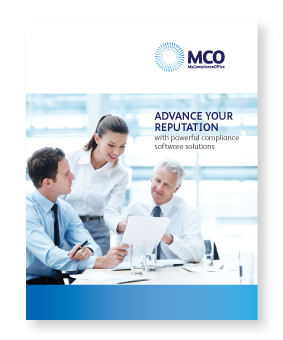Multi-Branch Advisers
You can download a full copy of the slides from this webinar.
Full video transcript available below:
|
Thank you, Vicky. The next priority is multi-branch advisors. The multi-branch model is something that's common in broker dealers, and there's recently been an increase in the use of this model in investment advisors. In addition to discussing multi-branch advisors in the 2017 exam priorities, the SEC also released a risk alert in December on this topic. If you're a multi-branch advisor if you haven't read the risk alert I highly recommend that you do. |
|
One of the areas the SEC is focusing on for multi-branch advisors is policies and procedures regarding the oversight of branch offices. Of course, you should have written policies in this area which covers supervision instruction. You want to make sure that supervision is tailored to the risks of each specific branch office. Another thing is that you want to define the role of compliance in overseeing branch offices and also make sure that compliance has proper access to documents for testing and reviewing. In addition, you want to make sure that you properly identify your supervised persons and access persons at branch office locations. |
|
The SEC will also be focusing on investment advice provided by the branch offices. Here there are several tests or reviews you can conduct in this area. The first of which is reviewing the investment strategy and investment decision making process of each branch. While ideally it would be nice is everything's the same across the board, sometimes different branches do have different ways of doing things. You want to make sure that the investment decision making process is accurately reflected in your policies and procedures and your ADV disclosures. |
|
The next review you can conduct is of outside business activities of branch offices employees. You want to ensure that any conflicts of interest as a result of outside business activities are fully disclosed, so you should make sure that all employees on initial and annual basis are completing outside business activity questionnaires and also know that if they begin any new outside business activities during the year that they need to be reported to compliance and probably should receive prior approval. I also recommend periodically reviewing a sample of client files to ensure that recommendations are suitable for the client and that accounts are managed in accordance with the disclosed investment strategy. |
|
Another task is that you can review a securities cross reference. This is a document that lists all of the securities held by accounts at the firm and shows you the accounts that they are held in. You can use this document to check if client within the same strategies have similar holdings. It just gives you an idea to see if there's been any dispersion or shift from disclosed investment strategies. |
|
Finally, you want to make sure that you have procedures in place for monitoring the trading of branch offices including reviewing the allocation of investment opportunities. You want to be sure that there's no one client or even particular group of clients that are being favored over others. |
|
The SEC will also be looking at how fees and expenses are calculated. In this area, I recommend that you test check a sample of advisory fees each quarter to ensure that they're being properly calculated. This is especially important if branch offices are calculating their own fees rather than fees being calculated all by the main office. |
|
Another thing when reviewing fess is you want to make sure that you don't forget to verify that the fee charged matches the fees state din the client's investment advisory contract. You'd be surprised how many times that fees have changed over time, or if something was even just incorrectly input into the system initially when estimating what fee should be charged to the client. |
|
Another high risk area for multi-branch advisors is marketing and advertisement. It can be difficult to monitor what marketing materials are being used if you're not on site. You want to be sure to have policies and procedures requiring that marketing materials must be reviewed by compliance prior to dissemination. |
|
Another good practice is that you could have a shared drive of approved marketing materials in a read-only format. This provides employees a place to go where they know that materials have already been reviewed and approved. If you're from actively markets I recommend that you have employees certify on a quarterly basis, that they only use approve marketing materials. This can be done in conjunction with your quarterly personal security strength action reports. |
|
Finally, you want to be sure to conduct periodic visits of branch offices. Being on site is really the only way to get a feel of the office culture and the day-to-day activities. Also in addition to scheduled visits, it's a good idea to sometimes show up unannounced. This can really give you good insight as to how the office operates. I know back when I was at the SEC, although it's changed now and they don't frequently do unannounced visits, all examinations when I first started were unannounced. You definitely get to see things a little differently when you just pop in than when somebody knows you're coming. |
|
Now I will turn things over to Vicky for the next slide.
|
Read 5 ways to improve Hedge Fund Compliance
This webinar was cohosted with NorthpointCompliance


